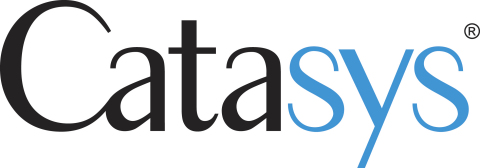LOUISVILLE, Ky. & LOS ANGELES--(BUSINESS WIRE)--Integration of a substance abuse treatment program into population-based behavioral care helped improve health outcomes and lower costs according to a peer-reviewed, retrospective cohort study released this week by Humana Inc. (NYSE: HUM) and Catasys Inc. (CATS) at the American Society of Addiction Medicine annual conference.
According to the National Survey on Drug Use and Health, approximately 23 million Americans need treatment for a substance abuse disorder (SUD). However, less than 11% receive treatment. This present approach creates a passive system, wherein over 20 million people who may benefit from substance abuse treatment (SAT) are overlooked.
To create a more proactive approach, Humana integrated an SAT program with Catasys into its population-based behavioral health efforts. The program used claims-based analytics to identify individuals at risk for medical and psychiatric complications from substance abuse and proactively engaged them in treatment and care coaching over a 52-week period.
The objective of the Humana/Catasys study was to compare changes in emergency room (ER) visits and inpatient hospitalizations for participants in the SAT program and changes in total cost of care among participants in the SAT program versus eligible individuals who did not participate (non-participants).
“The improved health outcomes results clearly reflect the benefits that population health can achieve by integrating substance abuse programs,” said Dr. Larry Weinstein, Chief Medical Officer for LifeSynch, a wholly owned subsidiary of Humana that provides behavioral health services. “By taking a proactive approach, as opposed to a reactive one, we were able to reach people at risk for medical and psychiatric complications from substance use disorders. This enabled us to take the necessary steps to help people improve their health.”
Study Findings
Key findings from the Humana/Catasys study include:
- Proactive, integrated, population-based approach to substance abuse program enrollment resulted in a 17.6% enrollment rate, compared to the national average of 10.9%;
- Participants had 16% fewer ER visits and 67% fewer inpatient hospitalizations than before beginning the program; and
- Health care costs dropped an average of 46% for the participant group, whereas non-participant costs increased an average of 14%.
“We are pleased to help members with substance use disorders engage the type of support needed to improve their health and well-being,” said Omar Manejwala, M.D., Chief Medical Officer for Catasys. “Treated members are proactively managing their conditions, and their improved health results in fewer trips to the emergency room and fewer inpatient admissions.”
Study Methodology
The Humana/Catasys study population included 151 participants and 2,198 matched non-participants. The mean age of the participant cohort was 59 years old.
Eligible individuals were identified by a medical claims history of SUD, elevated claims threshold, and absence of exclusionary diagnoses such as cancer and transplants. For the Humana/Catasys study, participants were matched to eligible non-participants based on a score from an algorithm used to estimate medical condition severity and functionality.
Humana/Catasys study outcomes were measured over the duration of the program, which occurred between November 1, 2013 and October 31, 2014.
As an indicator of health status, the mean number of ER visits and inpatient admissions per person and the mean length of stay were calculated using claims data and compared between the participants before and after participation in the SAT program. Costs were reported as changes in average allowed claims costs per member per month for both the participant and non-participant groups.
Humana and Catasys presented these findings at the American Society of Addiction Medicine 46th annual conference, which took place April 23-26, 2015 in Austin, TX.
About Humana
Humana Inc., headquartered in Louisville, Ky., is a leading health and well-being company focused on making it easy for people to achieve their best health with clinical excellence through coordinated care. The company’s strategy integrates care delivery, the member experience, and clinical and consumer insights to encourage engagement, behavior change, proactive clinical outreach and wellness for the millions of people we serve across the country.
More information regarding Humana is available to investors via the Investor Relations page of the company’s web site at www.humana.com, including copies of:
- Annual reports to stockholders;
- Securities and Exchange Commission filings;
- Most recent investor conference presentations;
- Quarterly earnings news releases;
- Replays of most recent earnings release conference calls;
- Calendar of events (including upcoming earnings conference call dates and times, as well as planned interaction with research analysts and institutional investors);
- Corporate Governance information.
About Catasys
Catasys, Inc. provides specialized healthcare management services to health plans and employers through its OnTrak program. Catasys’ OnTrak program—contracted with a growing number of health insurers—is designed to improve member health and, at the same time, lower costs to the insurer for underserved populations where behavioral health conditions cause or exacerbate co-existing medical conditions. The program utilizes analytics to engage members in need of care and patient-centric treatment that integrates evidence-based medical and psychosocial interventions along with care coaching in a 52-week outpatient program. OnTrak is currently improving member health and, at the same time, is demonstrating reduced inpatient and emergency room utilization, driving a more than 50 percent reduction in total health insurers’ costs for enrolled members. Catasys currently operates OnTrak in Florida, Kansas, Kentucky, Louisiana, Massachusetts, New Jersey, Oklahoma, West Virginia and Wisconsin. For further information, please visit catasys.com.




